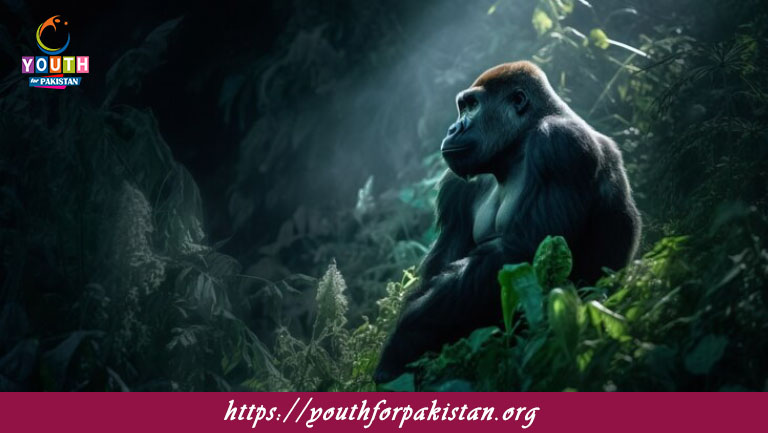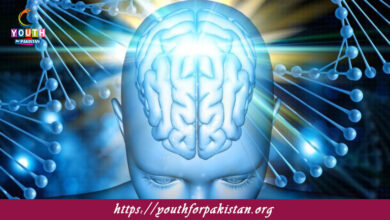Darwinism MDCAT MCQs with Answers

Welcome to the Darwinism MDCAT MCQs with Answers. In this post, we have shared Darwinism Multiple Choice Questions and Answers for PMC MDCAT 2024. Each question in MDCAT Biology offers a chance to enhance your knowledge regarding Darwinism MCQs in this MDCAT Online Test.
Darwinism primarily refers to the theory of:
a) Evolution by natural selection
b) Inheritance of acquired traits
c) Uniformitarianism
d) Catastrophism
According to Darwinism, the driving force behind evolution is:
a) Natural selection
b) Genetic drift
c) Gene flow
d) Mutation
Darwin’s theory of evolution is based on which of the following concepts?
a) Descent with modification
b) Inheritance of acquired traits
c) Spontaneous generation
d) Genetic drift
In Darwinism, “fitness” refers to an organism’s ability to:
a) Survive and reproduce
b) Compete with other species
c) Avoid predators
d) Adapt to environmental changes
Darwin’s concept of natural selection includes:
a) Variation, competition, and inheritance
b) Uniformity, competition, and random changes
c) Inheritance of acquired traits and mutation
d) Genetic drift and gene flow
According to Darwinism, new traits in a population arise primarily through:
a) Mutations
b) Environmental changes
c) Genetic drift
d) Gene flow
Which of the following did Darwin use as evidence for his theory of evolution?
a) Fossil record
b) Embryology
c) Comparative anatomy
d) All of the above
Darwin’s theory was initially controversial because it challenged:
a) Religious beliefs about the origin of life
b) The theory of relativity
c) The germ theory of disease
d) The concept of spontaneous generation
The term “natural selection” was introduced by:
a) Charles Darwin
b) Alfred Russel Wallace
c) Gregor Mendel
d) Jean-Baptiste Lamarck
Which of the following best describes “adaptive radiation”?
a) The diversification of a single ancestor into a variety of forms
b) The random change in allele frequencies in a population
c) The movement of alleles between populations
d) The inheritance of traits acquired during an organism’s lifetime
Darwin’s observations of which group of animals were crucial for his development of the theory of evolution?
a) Finches
b) Mammals
c) Insects
d) Reptiles
In Darwinism, the “struggle for existence” refers to:
a) Competition among individuals for limited resources
b) The fight between different species
c) The struggle against environmental changes
d) The effort to survive against predators
Darwin’s theory proposes that evolution occurs:
a) Gradually over time
b) Rapidly in sudden bursts
c) Only in isolated populations
d) Through the inheritance of acquired traits
Which of the following concepts was NOT part of Darwin’s theory of evolution?
a) Inheritance of acquired traits
b) Descent with modification
c) Natural selection
d) Common descent
Darwin’s theory of evolution by natural selection emphasizes:
a) Differential survival and reproduction
b) Uniformitarianism
c) Genetic drift
d) Gene flow
Which of the following did Darwin NOT use as evidence for his theory?
a) Comparative anatomy
b) Molecular genetics
c) The fossil record
d) Biogeography
Darwin’s theory of evolution was initially published in:
a) “On the Origin of Species”
b) “The Variation of Animals and Plants Under Domestication”
c) “The Descent of Man”
d) “The Structure and Distribution of Coral Reefs”
Which of the following best describes “survival of the fittest”?
a) Only the most adaptable individuals reproduce successfully
b) Only the strongest individuals survive
c) All individuals in a population survive equally
d) The largest species dominate
Darwin’s theory of evolution includes the concept that:
a) All living organisms share a common ancestor
b) Evolution occurs due to the inheritance of acquired traits
c) Evolution happens in a linear, stepwise process
d) The environment directly causes changes in organisms
According to Darwin, the “fitness” of an organism is primarily determined by its:
a) Ability to reproduce
b) Physical strength
c) Size
d) Resistance to diseases
Which of the following concepts did Darwin contribute to the understanding of evolution?
a) Genetic drift
b) Natural selection
c) Gene flow
d) Molecular evolution
Darwin’s observations of which island group played a crucial role in his formulation of the theory of evolution?
a) Galápagos Islands
b) Hawaiian Islands
c) Caribbean Islands
d) Fiji Islands
Darwin’s theory suggests that:
a) Evolution is driven by random mutations alone
b) Evolution occurs through natural selection and adaptation
c) All traits are acquired during an organism’s lifetime
d) Evolution is a result of environmental catastrophes
Which of the following was NOT a source of evidence for Darwin’s theory of evolution?
a) Fossil record
b) Comparative embryology
c) Molecular biology
d) Biogeography
The concept of “descent with modification” means that:
a) New species evolve from existing species with changes over time
b) Species remain unchanged throughout their existence
c) Evolution occurs through sudden, dramatic changes
d) Traits are inherited from parents to offspring without change
Darwin’s concept of “natural selection” involves:
a) Differential survival and reproduction of individuals
b) Random changes in allele frequencies
c) Migration of individuals between populations
d) Environmental changes causing rapid evolution
Darwin’s theory was influential because it:
a) Provided a mechanism for evolution based on natural selection
b) Focused solely on the inheritance of acquired traits
c) Suggested that evolution occurs without any mechanism
d) Proposed that all species were created independently
Darwin’s work on evolution was complemented by the research of:
a) Alfred Russel Wallace
b) Gregor Mendel
c) Louis Pasteur
d) Robert Hooke
According to Darwinism, which of the following is NOT a component of natural selection?
a) Variation
b) Inheritance
c) Overproduction
d) Uniformity
Darwin’s theory posits that the primary driver of evolutionary change is:
a) Natural selection
b) Genetic drift
c) Gene flow
d) Mutation
Darwin’s observations of which feature contributed significantly to his ideas about evolution?
a) Finches’ beak sizes
b) Mammalian skull shapes
c) Plant leaf arrangements
d) Fish gill structures
Darwin’s theory was supported by evidence from which scientific field?
a) Paleontology
b) Quantum physics
c) Astronomy
d) Chemistry
Which of the following does NOT align with Darwin’s theory of evolution?
a) Evolution by natural selection
b) Inheritance of acquired characteristics
c) Common descent with modification
d) Adaptive radiation
Darwin’s theory of evolution includes the idea that:
a) All species are related through common ancestry
b) Evolution occurs at a constant rate across all species
c) The environment directly changes an organism’s traits
d) Species remain unchanged over time
Darwin’s idea of “survival of the fittest” refers to:
a) The ability to adapt to environmental changes and reproduce
b) The physical strength of an individual
c) The size of an organism
d) The resistance to diseases
Which aspect of Darwin’s theory was challenged by the discovery of genetics?
a) The concept of inheritance of traits
b) The idea of common descent
c) The process of natural selection
d) The fossil record
Darwin’s theory of evolution suggests that:
a) Evolution is driven by random genetic changes and selection pressures
b) Evolution is influenced solely by environmental factors
c) All evolutionary changes are uniform across species
d) New species are created in response to sudden changes
The theory of natural selection implies that:
a) Traits that enhance survival and reproduction are more likely to be passed on
b) Traits are inherited without change from parents to offspring
c) Evolution occurs through the inheritance of acquired traits
d) All traits in a population are equally likely to be passed on
Which concept did Darwin propose to explain the diversity of life forms?
a) Natural selection
b) Spontaneous generation
c) Uniformitarianism
d) Catastrophism
Darwin’s observations in the Galápagos Islands led him to propose that:
a) Species adapt to their environment over time
b) All species are immutable
c) Evolution occurs through catastrophic events
d) Organisms evolve solely due to environmental changes
Darwin’s theory of evolution emphasizes:
a) The role of natural selection in shaping species
b) The inheritance of traits acquired during an organism’s lifetime
c) The sudden appearance of new species
d) The uniformity of traits across populations
If you are interested to enhance your knowledge regarding Physics, Chemistry, Computer, and Biology please click on the link of each category, you will be redirected to dedicated website for each category.




